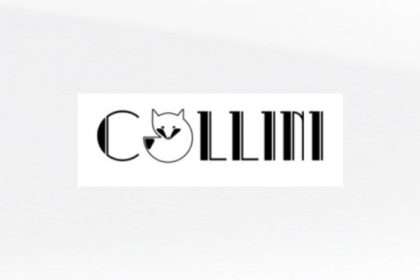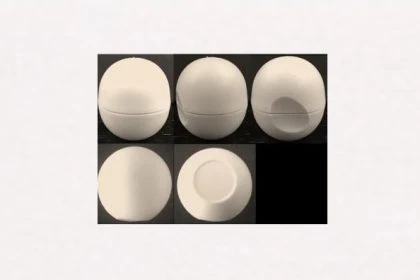The trademark dispute Pollini v. Collini was not only about the likelihood of confusion. The CFI ruled on the omission of the examination of use of the earlier mark based on the Opposition Division’s view that there was no likelihood of confusion.
 In the interesting trademark dispute Pollini v. Collini, which was decided by the CFI (15 December 2021, T-69/2), the issue is, on the one hand, the examination of a likelihood of confusion between the two trademarks. This is interesting in itself, because the older trade mark is the national Italian word mark Pollini with trade mark protection since 1972, while the younger trade mark in dispute is a European word and figurative mark with a stylised representation of a fox, which the plaintiff Carmine Rotondaro (Monaco) applied for in 2016. Both marks claim goods in Nice Classes 18 and 25, essentially: Bags, clothing and fashion.
In the interesting trademark dispute Pollini v. Collini, which was decided by the CFI (15 December 2021, T-69/2), the issue is, on the one hand, the examination of a likelihood of confusion between the two trademarks. This is interesting in itself, because the older trade mark is the national Italian word mark Pollini with trade mark protection since 1972, while the younger trade mark in dispute is a European word and figurative mark with a stylised representation of a fox, which the plaintiff Carmine Rotondaro (Monaco) applied for in 2016. Both marks claim goods in Nice Classes 18 and 25, essentially: Bags, clothing and fashion.
Omission of review of trademark use
However, the second major aspect of this case is at least as interesting: the Opposition Division of the EUIPO had omitted the examination of genuine use of the earlier mark requested in the proceedings because it was of the opinion that there was no similarity for a likelihood of confusion. So the question was: Had the subsequently appealed EUIPO Board of Appeal, which overturned that decision of the Opposition Division and remitted the case to it because the Board of Appeal did find that there was similarity between the marks, been able to conclude without error that that similarity required a full assessment of the likelihood of confusion?
This question overlaps several requirements from case law as well as directives of the EUIPO.
If there is no likelihood of confusion between the conflicting signs, the evidence of use of the earlier mark does not have to be examined, as the case law of the European Court of Justice has stated for many years (CFI 2005, T-296/02, para. 43). However, this does not apply if it is established that there is a low degree of similarity between the signs – or does it?
Indeed, the EUIPO Guidelines state that such an examination should not be carried out if it cannot affect the final outcome of the opposition proceedings (EUIPO Internal Guidelines, Part C, Section 6, paragraph 3.7.2), as argued by the applicant Carmine Rotondaro.
The highest European court (ECJ) also has a clear case law regarding earlier trade marks in appeal proceedings. In the much-noted 2018 decision mobile.de, the ECJ held that the question of proof of genuine use of an earlier trade mark must be determined before the decision on the opposition as such, and that this constitutes a “preliminary question” in that sense.
And under Article 71(1) of Regulation 2017/1001, the Board of Appeal may either exercise the powers of the body that took the decision at issue or remit the case to that body for continuation of the proceedings.
Absence of proof of use of the earlier mark
The CFI’s decision therefore dealt, firstly, with the lack of review of the proof of use of the earlier mark. The Board of Appeal was right to find, in essence, the CFI ruled, that the Opposition Division had wrongly denied the possibility of a likelihood of confusion and that it should therefore have examined the evidence of use of the earlier national mark. The CFI referred to the ECJ’s mobile.de judgment, according to which this constitutes a “preliminary question” before the actual opposition.
The CFI explained that the aforementioned internal guidelines of the EUIPO refer to the case when the likelihood of confusion is absent. However, if – as in the present case – the likelihood of confusion cannot be ruled out, the applicant could not successfully rely on the provisions of the EUIPO’s internal guidelines, the CFI ruled.
EuG: Similarity rightly found
In the other part of the decision “Pollini vs. Collini”, the CFI reviewed the similarity between the marks, which had been found by the Board of Appeal – contrary to the view of the Opposition Division. This similarity was rightly found, the CFI ruled, explaining.
There are differences between the signs, the CFI explained, namely in the initial letter and in the stylised representation of a fox in the younger disputed mark Collini. But in all other respects the signs are identical when comparing the two marks, namely the complete sequence of letters -ollini. Consumers would recognise the letter “o” in the Collini mark despite the stylised representation.
Therefore, both phonetic and visual similarity could be found, the Court held, and this was not overridden by the comparison of conceptual similarity (which in turn shows that both marks represent family names; but neither has a particular reputation).
In those circumstances, having rightly concluded that there could be a likelihood of confusion in relation to the Italian earlier mark, the Board of Appeal was entitled under Article 71 of Regulation 2017/1001 to annul its decision and refer the case back to it. The CFI emphasised that it was entitled to do so without itself carrying out an examination of the relative grounds for refusal put forward by the intervener, including the one based on the existence of a likelihood of confusion with the earlier EU trade mark.
The action against the Board of Appeal’s decision was therefore dismissed in its entirety.
Would you also like to defend or protect your trademark?
Our lawyers have many years of expertise in trade mark law as well as in the entire field of intellectual property and are entitled to represent you before any court – in Germany and also internationally.
Sources for text and image:
EuG, T‑69/21 and case law








Leave a Reply